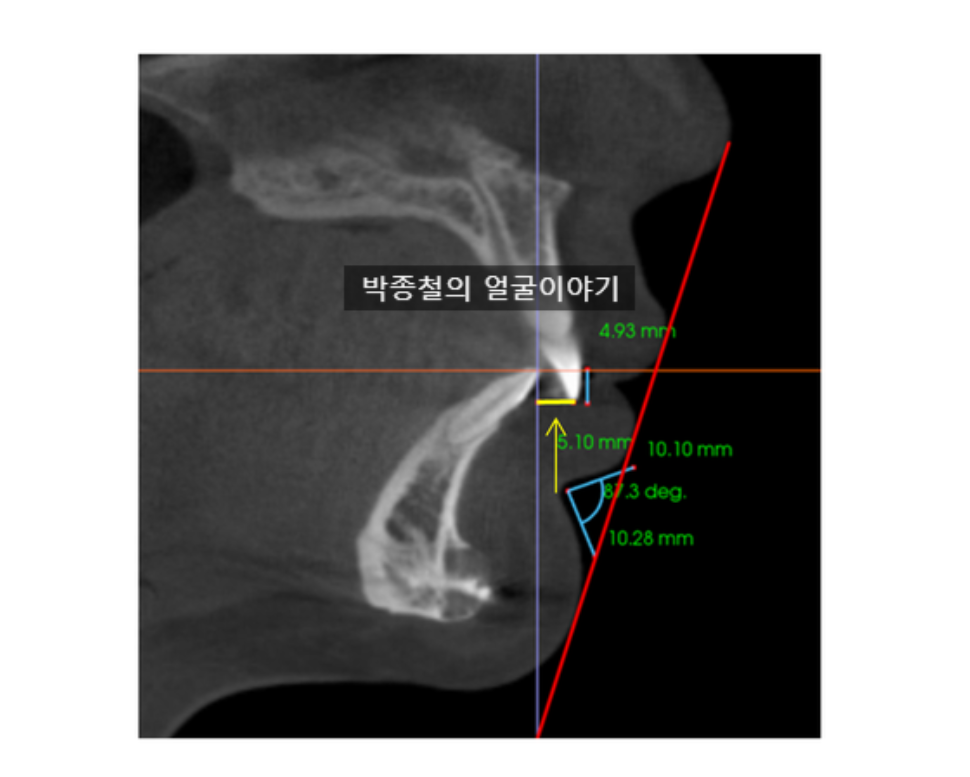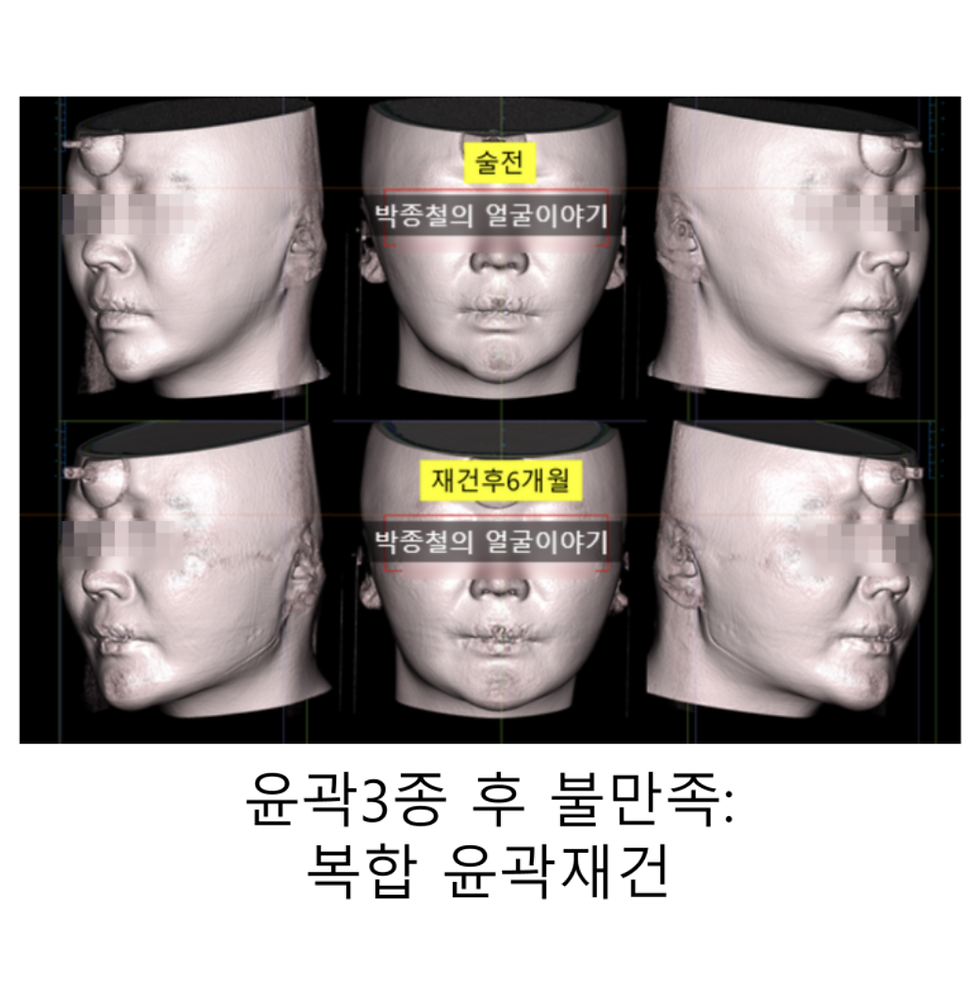Why Your Chin Surgery Looks Unnatural: 3 Secrets to a Perfect Side Profile
- Dr. Park

- Oct 6
- 5 min read
Hello, I am Dr. Park Jong-cheol, an Oral and Maxillofacial Surgeon.
Many people concerned about a “weak chin” consider procedures like a sliding genioplasty or chin implants to achieve a more defined and ideal side profile. They often expect that simply adding volume to the chin will be enough to create a beautiful facial contour.
However, successful chin surgery requires a more in-depth analysis than just augmenting bone volume. This is why I often see patients who are aesthetically dissatisfied after their procedure or are even considering revision surgery due to an unnatural or awkward new facial line.
It is crucial to understand that the root cause of the issue may not be the chin itself. In such cases, repeating chin surgery over and over will likely not lead to a satisfactory result.
Today, I will explain the three key factors you absolutely must understand before undergoing chin surgery to achieve a truly beautiful side profile.
First: The 'E-Line' — A Benchmark for Facial Harmony
While beauty standards can be subjective, there are universally accepted principles of harmony for an aesthetic side profile. The most representative benchmark is Ricketts' E-line (Esthetic Line).
The E-line is a hypothetical straight line drawn from the tip of the nose to the tip of the chin. An ideal profile is generally considered to be one where the upper lip rests 2-4 mm behind this line, and the lower lip is 1-2 mm behind it.

Second: The Mentolabial Sulcus — The Key to a Natural Look
Just as important as the E-line in determining a natural profile is the mentolabial sulcus. This is the subtle groove or depression located between the lower lip and the chin.

If the angle of this sulcus is too deep, it can cause the chin muscle to bunch up when closing the mouth (known as "chin dimpling" or "peau d'orange") and may create a stubborn-looking appearance. While an angle between 107 and 118 degrees is generally considered ideal, this is not an absolute rule. What matters most is the overall harmony with other facial features like the nose and lips.
Third: The Hidden Key — Your Dental Overjet
The final and equally critical factor to assess is the position of your teeth. Specifically, the overjet, which describes the horizontal relationship between your upper and lower front teeth, must be considered. In the diagram below, the distance indicated by the yellow arrow is the overjet.

Why Do My Teeth Matter So Much for My Side Profile?
The E-line and mentolabial sulcus are not determined by the chin's position alone. Our profile is a complex, three-dimensional structure created by the interplay of the nose, lips, and the jawbones and teeth that support them. One of the most critical structures determining the volume and position of your lips is, in fact, your teeth.
A sliding genioplasty or a chin implant can only change the shape of the chin bone; it has no effect on the position of the teeth. If you have an abnormal dental alignment and simply add volume to the chin, you risk creating an unnatural profile where only the chin protrudes, leading to a disharmonious result.
1. In Cases of a Normal Overjet
If your upper front teeth correctly overlap your lower teeth within the normal range (2-3 mm), a genioplasty or chin implant can work beautifully. By improving the projection of the chin, the E-line will align ideally, and the mentolabial sulcus will soften, resulting in a sophisticated and balanced side profile.

2. In Cases of an Excessive Overjet
However, the story is very different if your upper front teeth protrude significantly beyond your lower teeth (an excessive overjet). Most individuals with this condition already have a deep mentolabial sulcus before any surgery.

What happens if you push the chin forward without correcting this underlying dental issue?

The chin alone will stick out, causing the mentolabial sulcus above it to become even deeper. This can result in an awkward and unnatural appearance often referred to as a "witch's chin."

The patient in the image above had a large overjet of 5.10 mm and received a 7 mm chin implant. This resulted in the mentolabial sulcus angle narrowing to a very acute 87.3 degrees, creating an artificial look. The patient wanted to remove the implant and have her own bone advanced, as an E-line analysis still suggested her chin was recessed.
What's the Real Solution for a Deepened Sulcus?
In these situations, the fundamental solution is not to operate on the chin again but to correct the excessive overjet. This can be achieved through orthognathic surgery (jaw surgery), such as a mandibular advancement or a maxillary setback, to fix the improper relationship between the upper and lower jaws.
The patient in this case study did not want to elongate her face and also needed her bite corrected, so she opted for a maxillary setback. This procedure moves the entire upper jaw backward to establish a normal dental relationship.


As a result of the surgery, the upper jaw moved back, allowing the lower lip to retract naturally. This softened the deep mentolabial sulcus and restored an ideal E-line.

Without any additional chin surgery, the awkward chin line was transformed into a harmonious and natural side profile.

Conclusion: An Aesthetic Profile Lies in the Harmony of Teeth and Jaws
If you desire a refined side profile and wish to correct a weak chin, you cannot focus on the volume of the chin alone. You must remember that your unseen dental bite—your overjet—is a key factor that will determine the final look of your profile.
A surprising number of patients considering chin surgery for a recessed chin also have an excessive overjet. Therefore, for a successful outcome, it is essential to undergo a precise diagnosis with an oral and maxillofacial surgeon to comprehensively analyze your jawbones, dental occlusion, and the shape of your mentolabial sulcus. Based on this, you can find the most suitable surgical method for you, whether it be a genioplasty, an implant, or corrective jaw surgery.

턱끝수술 턱옆모습



Comments